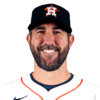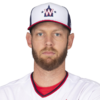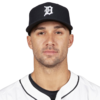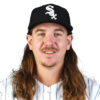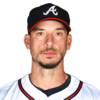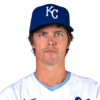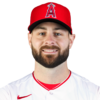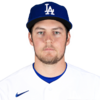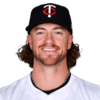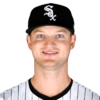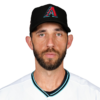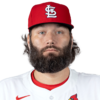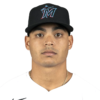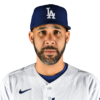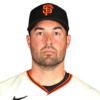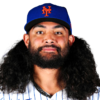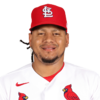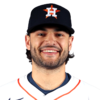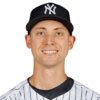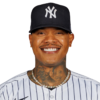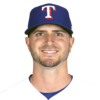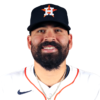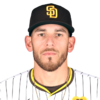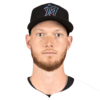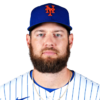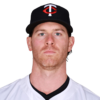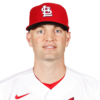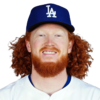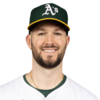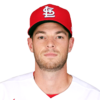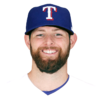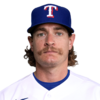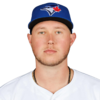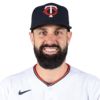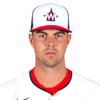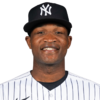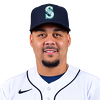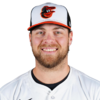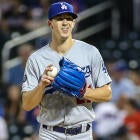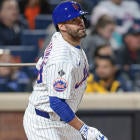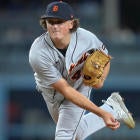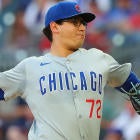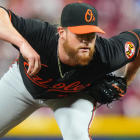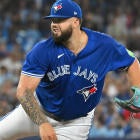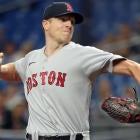I've made my views on high-end starting pitching perfectly clear already, pointing out in an earlier piece that it and stolen bases are the only real currency in Fantasy baseball. They're all that matters these days.
It's an extreme way of looking at things, but an extreme environment calls for an extreme approach. And I don't know how you could call what we've seen over the past few years, with drag-resistant baseballs being introduced to a fly-ball revolution, as anything other than extreme.
Most every hitter is a home run hitter now, and when there are that many opportunities for a lineup to ruin a pitcher's day, only the best of the best can withstand it. And since the best of the best are already missing bats at unprecedented rates — another extreme in these days of extremes — the gap between them and the rest of the starting pitcher crop couldn't possibly be bigger.
And I haven't even mentioned the innings chasm. Yeah, in these days of specialization, the best of the best are also the ones most often asked to take a third turn through the lineup. Stack that many advantages on top of one another, and it shouldn't be a surprise the rest of the position can't hang. High-end starting pitchers are truly the only ones who matter.
Fortunately, they're many in number — not so plentiful that you can relax and take them as they come, but plentiful enough that you can come away with four or five if you're committed to it. And I think I just explained why you should be.
In articles and podcasts, I've casually referenced 40 as the number of aces and/or near-aces, with another 12-15 who have at least hinted at that kind of potential. In actuality, it's 35 and 24. I know because I've taken the time to list them out here. It's no longer just a mysterious mass. They're all named, one by one.
Of those 35 who we're all pretty confident have a possible ace outcome, we'll begin with the ones who put it on full display last year:
| 2020 ADP | 2019 PPG | 2019 ERA | 2019 K/9 | |
|---|---|---|---|---|
Gerrit Cole
NYY SP
| 5 | 22.46 | 2.50 | 13.8 |
Jacob deGrom
NYM SP
| 7 | 18.30 | 2.43 | 11.3 |
Max Scherzer
WAS SP
| 14 | 18.20 | 2.92 | 12.7 |
Walker Buehler
LAD SP
| 15 | 17.35 | 3.26 | 10.6 |
Justin Verlander
HOU SP
| 16 | 22.5 | 2.58 | 12.1 |
Stephen Strasburg
WAS SP
| 22 | 18.50 | 3.32 | 10.8 |
Jack Flaherty
STL SP
| 24 | 16.50 | 2.75 | 10.6 |
Shane Bieber
CLE SP
| 25 | 17.63 | 3.27 | 10.9 |
Clayton Kershaw
LAD SP
| 33 | 18.43 | 3.03 | 9.5 |
Mike Clevinger
CLE SP
| 34 | 19.02 | 2.71 | 12.1 |
Patrick Corbin
WAS SP
| 35 | 16.52 | 3.25 | 10.6 |
Luis Castillo
CIN SP
| 43 | 16.03 | 3.40 | 10.7 |
Charlie Morton
TB SP
| 50 | 16.79 | 3.05 | 11.1 |
Zack Greinke
HOU SP
| 51 | 18.65 | 2.93 | 8.1 |
Lucas Giolito
CHW SP
| 54 | 16.86 | 3.41 | 11.6 |
They're not all on equal footing, of course. The top four have longer track records and higher highs, for the most part. Gerrit Cole, being the youngest at age 29, is a slam dunk to go in the first round, and I've seen drafts where Jacob deGrom and Max Scherzer also do. Justin Verlander could get back there with the delayed start to the season putting his injury concerns to bed. It's largely a matter of opinion after that, though Walker Buehler has been deemed the one most likely to get even better.
Zack Greinke and Charlie Morton tend to fall due to their 36 years of age, but the risk of a blowout is so high for every pitcher that the usual risk factors — the ones that might steer you away from a player at some other position — seem quaint by comparison. Part of the reason you have to draft so many high-end starting pitchers is that, yes, some of them will fail. But it's the ones already exhibiting signs of decline that you should actively avoid.
To me, Clayton Kershaw is the clearest example of that. His velocity has been on the decline for several years, and he doesn't miss bats at nearly the rate he used to. He has compensated for it well enough, but if those skills slip any further, it could cause a problem. The 35-year-old Scherzer, meanwhile, is coming off a second half that was plagued by back issues, which could be the start of him showing his age. Of the big four at the top, he's the one I'd be most likely to pass over at the Round 1-2 turn.
So who's next in this group of 35?
| 2020 ADP | 2019 PPG | 2019 ERA | 2019 K/9 | |
|---|---|---|---|---|
Blake Snell
TB SP
| 39 | 10.37 | 4.29 | 12.4 |
Aaron Nola
PHI SP
| 46 | 13.84 | 3.87 | 10.2 |
Yu Darvish
CHC SP
| 62 | 12.89 | 3.98 | 11.5 |
Trevor Bauer
CIN SP
| 78 | 13.04 | 4.48 | 10.7 |
Corey Kluber
TEX SP
| 92 | 6.57 | 5.80 | 9.6 |
Carlos Carrasco
CLE SP
| 124 | 6.57 | 5.29 | 10.8 |
James Paxton
NYY SP
| 138 | 13.79 | 3.82 | 11.1 |
Ah, yes. We know who these guys are, right? They may have gotten sidetracked by injuries or early struggles adapting to the lower-seamed baseballs, with their slicker grip, but either the underlying numbers were still dominant or the track record makes a convincing enough case.
And you'll notice from the ADP column that some in this group are drafted even earlier than some from the last group, mostly for reasons having to do with upside. Durability is also the main concern for Blake Snell, a pitchers who was looking like a perennial Cy Young contender at this time a year ago. Aaron Nola, who himself got some Cy Young love in 2018, seems like the safest bet among this group given that he stayed healthy in 2019 and dominated for the middle four months of the season. He has since voiced his dissatisfaction with ousted pitching coach Chris Young, who only oversaw him for the one year.
Among the rest of this group, the most worrisome is Carlos Carrasco, who's not only coming off a fight with leukemia but is also contending with elbow inflammation that could sideline him for the start of the season. He isn't expected to be out long, but he still needs to prove his effectiveness and endurance coming off a taxing physical ordeal. James Paxton had a cyst removed from his back late in the offseason, but he should be recovered in time for the start of the season, thanks to the delay.
Trevor Bauer and Corey Kluber themselves aren't exactly worry-free. We don't know why Bauer went wrong — it could have been a grip issue, it could have been pitch selection — but he'll need to get his fly-ball rate back down to survive in his new home in Cincinnati. Kluber, meanwhile, is getting up there in years and didn't perform well in the little we saw of him last year. He's also moving to what looks to like another hitter-friendly environment in Texas, where the new park has smaller dimensions than the old.
| 2020 ADP | 2019 PPG | 2019 ERA | 2019 K/9 | |
|---|---|---|---|---|
Chris Paddack
SD SP
| 53 | 13.87 | 3.33 | 9.8 |
Tyler Glasnow
TB SP
| 67 | 17.17 | 1.78 | 11.3 |
Jose Berrios
MIN SP
| 70 | 15.11 | 3.68 | 8.8 |
Brandon Woodruff
MIL SP
| 86 | 15.25 | 3.62 | 10.6 |
Mike Soroka
ATL SP
| 94 | 16.10 | 2.68 | 7.3 |
Sonny Gray
CIN SP
| 95 | 14.95 | 2.88 | 10.5 |
Zack Wheeler
PHI SP
| 104 | 14.21 | 3.96 | 9.0 |
Frankie Montas
OAK SP
| 109 | 18.09 | 2.62 | 9.7 |
Zac Gallen
ARI SP
| 117 | 11.13 | 2.81 | 10.8 |
Madison Bumgarner
ARI SP
| 118 | 13.78 | 3.90 | 8.8 |
Lance Lynn
TEX SP
| 123 | 15.70 | 3.67 | 10.6 |
Shohei Ohtani
LAA DH
| 127 | 13.95* | 3.31* | 11.0* |
Hyun-Jin Ryu
TOR SP
| 133 | 18.40 | 2.32 | 8.0 |
*2018 stats
Yup, these 13 round out the pivotal 35, and as you can see from the ADP column, they're in high demand themselves.
Am I suggesting you should have your pitching staff more or less assembled by Pick 130? I am indeed suggesting just that. And remember: These ADP numbers are for traditional 5x5 Rotisserie leagues. It'll be even earlier than Pick 130 in a Head-to-Head points league, where the demand for high-end starting pitchers is even greater.
At minimum, I want four of these 35, and I'd prefer to have five. I've done as many as six before and didn't have cause to regret it. Every starting pitcher you take beyond this point is an appeal to luck. You're counting on them to do something they haven't done before — or at least aren't expected to do anymore.
So what more is there to say about this group? Well, some might already consider Chris Paddack and Tyler Glasnow to be aces. They haven't held together for an ace workload yet — and these days, it's risky to assume those that haven't indeed can — but the percentages are certainly there. Obviously, a shortened schedule helps. Inning for inning, Glasnow may have been the best pitcher in baseball last year.
I'm taking a leap of faith on Zac Gallen here, who has all of 15 major-league starts to his name, but his transition was so effortless after a thoroughly dominant stint at Triple-A that innings accumulation is my only real concern for him. And like I said, the shortened season helps.
On the whole, strikeouts are in lower supply for this group, with Mike Soroka and Hyun-Jin Ryu standing out in particular. They have the sort of profile that can account for that shortcoming, though, keeping their ground balls high and their walks low. And in the case of Soroka, we still don't know how high the strikeouts could get given that he's only 22.
Other than Shohei Ohtani, who's coming off Tommy John surgery and will only start every sixth day since he's serving as a DH in between, Madison Bumgarner is the most worrisome here, having left the comforts of Oracle Park for a more hitter-friendly venue. His home/away splits the past couple years, with his stuff on the decline, have been pretty extreme. I've found that Sonny Gray, Frankie Montas and Lance Lynn have a tendency to fall due to their uninspiring track records, but all have strong indicators of genuine reform. I'll have plenty of shares of each.
| 2020 ADP | 2019 PPG | 2019 ERA | 2019 K/9 | |
|---|---|---|---|---|
Eduardo Rodriguez
BOS SP
| 113 | 14.84 | 3.81 | 9.4 |
Jesus Luzardo
OAK RP
| 116 | 7.83 | 1.50 | 12.0 |

Dinelson Lamet
SD SP
| 121 | 10.68 | 4.07 | 13.0 |
Max Fried
ATL SP
| 130 | 12.56 | 4.02 | 9.4 |
Kyle Hendricks
CHC SP
| 140 | 13.47 | 3.46 | 7.6 |
Julio Urias
LAD RP
| 145 | 5.74 | 2.48 | 9.6 |
David Price
LAD SP
| 148 | 11.00 | 4.28 | 10.7 |
Robbie Ray
ARI SP
| 150 | 11.96 | 4.34 | 12.1 |
Mike Minor
TEX SP
| 155 | 14.78 | 3.59 | 8.6 |
Matthew Boyd
DET SP
| 156 | 12.19 | 4.56 | 11.6 |
Sean Manaea
OAK SP
| 160 | 22.40 | 1.21 | 9.1 |
Carlos Martinez
STL RP
| 164 | 5.84 | 3.17 | 9.9 |
Kenta Maeda
MIN SP
| 169 | 10.42 | 4.04 | 9.9 |
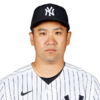
Masahiro Tanaka
NYY SP
| 175 | 11.86 | 4.45 | 7.4 |
German Marquez
COL SP
| 177 | 14.13 | 4.76 | 9.1 |
Lance McCullers
HOU SP
| 178 | 12.92* | 3.86* | 10.0* |
Luke Weaver
ARI SP
| 184 | 13.79 | 2.94 | 9.7 |
Mike Foltynewicz
ATL SP
| 185 | 11.74 | 4.54 | 8.1 |
Marcus Stroman
NYM SP
| 192 | 11.98 | 3.22 | 7.8 |
*2018 stats
If you still need pitching help at this stage of the draft — and most of you won't have heeded my advice, so you will — these 19 are as close as you'll get to a fallback option. They're basically your last hope for something you can count on at the position, and it of course doesn't apply in equal measure.
The safest bets are also the lowest-impact — guys like Eduardo Rodriguez, Kyle Hendricks and Marcus Stroman. Others like Jesus Luzardo, Dinelson Lamet, Julio Urias, Luke Weaver and Lance McCullers offer big potential, but with few assurances. You want to be in a position where you can afford to grab one of that latter group as your fifth or sixth starting pitcher and maybe get another ace out of it. I'm especially high on Luzardo, who figures to last the full season now thanks to the shortened schedule. I do wonder how regularly he'll throw six-plus innings, though.
The best of both worlds in terms of security and impact potential is Max Fried, who already has a full season of starts under his belt but didn't live up to his full potential. By that, I mean he had a lower xFIP than both Walker Buehler and Jack Flaherty last year. With an elite ground-ball rate and an adequate whiff rate, he could take another step forward this year, especially if he gets any help from new teammate Cole Hamels on a changeup that would neutralize opposite-handed hitters.
The most curious of this group is Matthew Boyd, whose extreme fly-ball tendencies were his downfall in this homer-happy league last year. The strikeout potential is exactly what you hope to get from an ace, though, and he doesn't beat himself with walks either. If you can afford to take on the risk, the reward could be significant.
There are some potential rewards later in the draft, too — it goes without saying an ace or two will rise from relative obscurity this year — but the probability for those in this next group is so low and the downside so great that they're nothing more than Hail Mary plays:
| 2020 ADP | 2019 PPG | 2019 ERA | 2019 K/9 | |
|---|---|---|---|---|
Jake Odorizzi
MIN SP
| 170 | 13.50 | 3.51 | 10.1 |
Andrew Heaney
LAA SP
| 193 | 9.61 | 4.91 | 11.1 |
Jose Urquidy
HOU SP
| 201 | 10.89 | 3.95 | 8.8 |
Joe Musgrove
PIT SP
| 211 | 11.17 | 4.44 | 8.3 |
A.J. Puk
OAK RP
| 221 | 3.55 | 3.18 | 10.3 |
Dylan Bundy
LAA SP
| 223 | 8.80 | 4.79 | 9.0 |
Josh James
HOU RP
| 231 | 3.14 | 4.70 | 14.7 |
Adrian Houser
MIL SP
| 238 | 6.19 | 3.72 | 9.5 |
Anthony DeSclafani
CIN SP
| 245 | 11.57 | 3.89 | 9.0 |
Mitch Keller
PIT SP
| 252 | 3.14 | 7.12 | 12.2 |
J.A. Happ
NYY SP
| 254 | 10.32 | 4.91 | 7.8 |
Michael Kopech
CHW SP
| 256 | 5.13* | 5.02* | 9.4* |
Dustin May
LAD RP
| 271 | 4.50 | 3.63 | 8.3 |
Alex Wood
LAD SP
| 284 | 6.57 | 5.80 | 7.6 |
Steven Matz
NYM SP
| 283 | 10.39 | 4.21 | 8.6 |
Brendan McKay
TB SP
| 295 | 5.77 | 5.14 | 10.3 |
Jordan Montgomery
NYY RP
| 299 | 4.50 | 6.75 | 11.3 |
Garrett Richards
SD SP
| 304 | 0.83 | 8.31 | 11.4 |
Nate Pearson
TOR RP
| 306 | ---- | 2.30^ | 10.5^ |
Matt Shoemaker
TOR SP
| 310 | 19.40 | 1.57 | 7.5 |
MacKenzie Gore
SD RP
| 325 | ---- | 1.69^ | 12.0^ |
Domingo German
NYY SP
| 349 | 15.24 | 4.03 | 9.6 |
Rich Hill
MIN SP
| 350 | 12.85 | 2.45 | 11.1 |
Justus Sheffield
SEA SP
| 361 | 4.69 | 5.50 | 9.3 |
Dylan Cease
CHW SP
| 387 | 7.11 | 5.79 | 10.0 |
Spencer Howard
PHI RP
| 431 | ----- | 2.03^ | 11.9^ |
Corbin Burnes
MIL RP
| 439 | 1.03 | 8.82 | 12.9 |
*2018 stats
^minor-league stats












